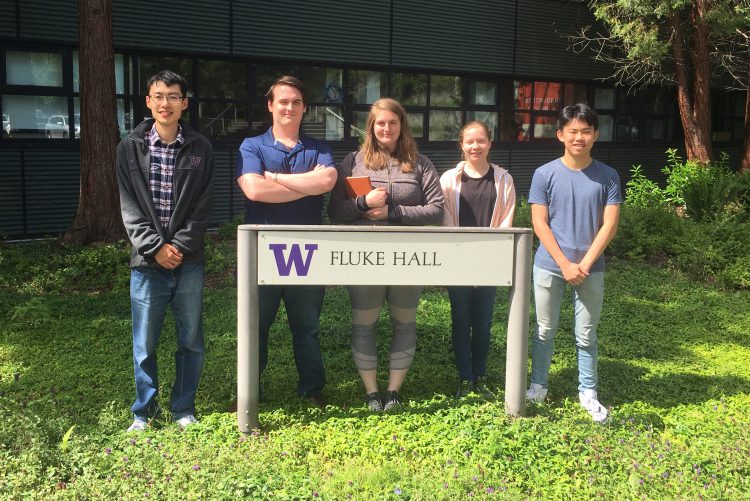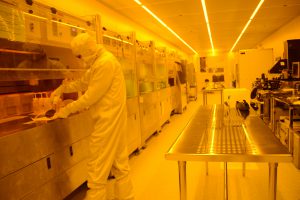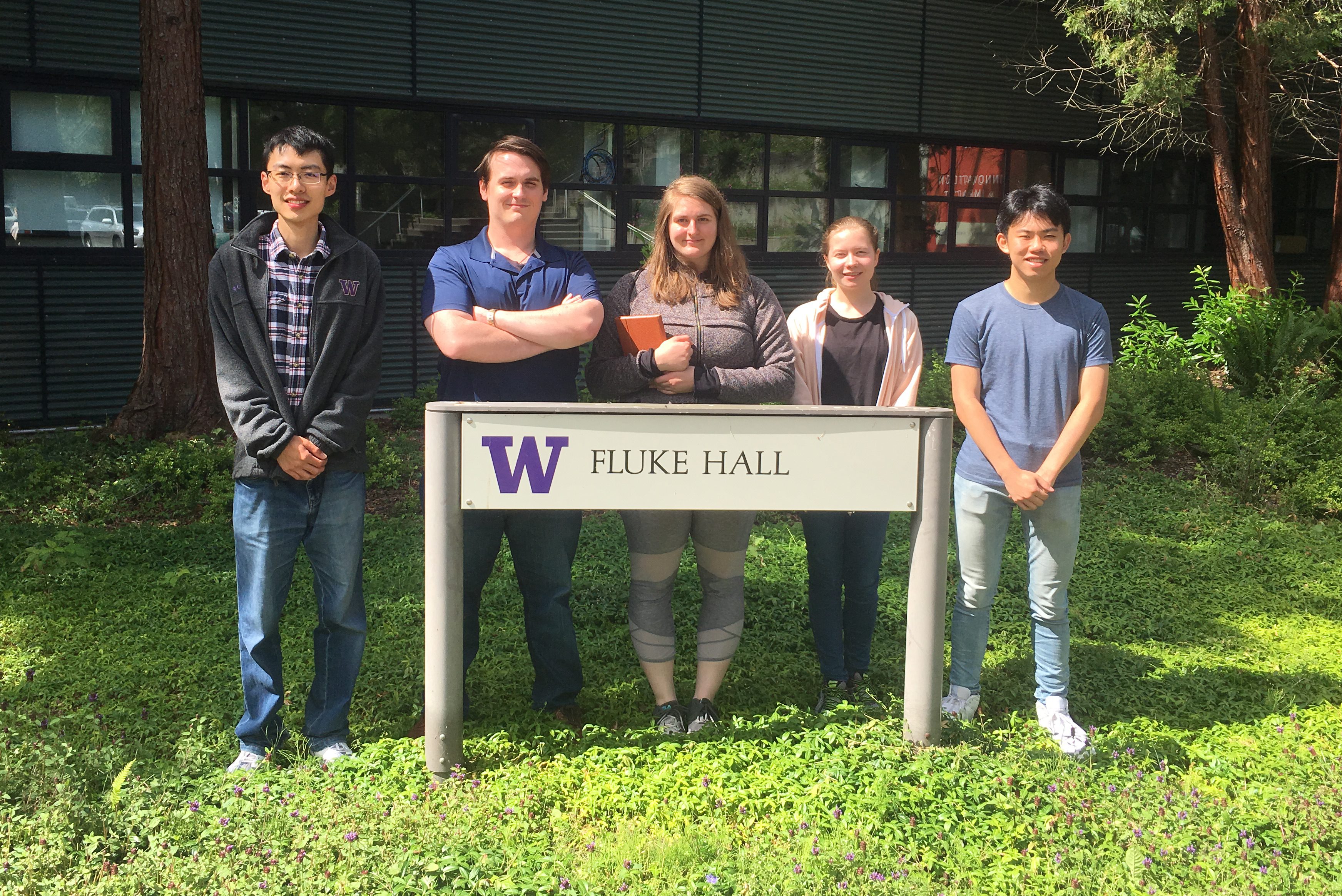
An undergraduate student constructing a probe to measure properties of quantum materials and a masters student developing an acousto-optic deflector to change the direction of an optical beam using sound waves are among the diverse group of five University of Washington students to receive $4,000 grants from the UW initiative QuantumX to fabricate nanoscale structures and devices in the Washington Nanofabrication Facility (WNF) this summer.
“Undergrad and masters students are rarely exposed to the nuts and bolts of nanofabrication,” says Kai-Mei Fu, associate professor of electrical and computer engineering and physics at UW and co-chair of QuantumX. “In part, this is because the specialized tools needed to fabricate structures and devices at the nanoscale are housed in a cleanroom, making them difficult to access and expensive to use. Thanks to funding from the Washington Research Foundation (WRF), we were able to offer students studying quantum information science an exceptional opportunity to go into WNF’s cleanroom and learn how to make the materials or devices they need as part of their research.”
QuantumX was established in 2018 to unify UW research in quantum information science, a research area that harnesses the principles of quantum mechanics to sense, transmit, and process information. Quantum technology has the potential to make communications more secure, carry out complex computations in less time, and make more powerful sensors.

In March 2019, QuantumX formed a new coalition with the Pacific Northwest National Laboratory and Microsoft Quantum, called the Northwest Quantum Nexus (NQN), to bring about a revolution in quantum research and technology. One of the key objectives of NQN is to cultivate a workforce with expertise in quantum science, engineering and technology through education and training.
Says Fu, “To support the growth of quantum information science we need more researchers and professionals who have experience with nanofabrication. Already, there is a high demand for engineers with this skillset in industry. We hope that through this hands-on experience, students gain a deeper understanding of the tools and processes involved in nanofabrication and are better prepared to pursue careers in either academia or industry.”
WNF is part of the UW Institute for Nano-Engineered Systems which seeks to catalyze innovative, interdisciplinary, and industry relevant research in the design, fabrication, and integration of scalable nano-engineered devices and systems. WNF is also part of the National Science Foundation’s National Nanotechnology Coordinated Infrastructure, a network of open-access nanotechnology user facilities across the country. The facility, located on the UW campus, serves both academic and industrial users and can accommodate users with diverse research interests and needs. This existing infrastructure will be beneficial to the growing quantum innovation ecosystem in the region.
“The great thing about WNF is that you can fabricate just about whatever you want there, which is what you need when you are doing research in this area,” says Fu. “Trying to make new things that have not been made before means that you need the ability to experiment, to iterate with different processes. You cannot be locked in to one manufacturing protocol. In this way, WNF is a key resource for academic researchers, small startups, and even large companies experimenting with new designs or processes.”
Funded student projects:
- Casey Ferris, a masters student in the Physics evening program, is working on a project in Mo Li’s lab fabricating an acousto-optic deflector which changes the direction of an optical beam using sound waves.
- April Opsvig, a rising senior in electrical and computer engineering, is working on a project in Kai-Mei Fu’s lab to fabricate integrated photonic cavities in gallium arsenide/gallium phosphide on silicon carbide to efficiently extract single emitted photons for quantum communication applications.
- Essance Ray, finishing a double major in chemistry and bioresource science and engineering next year, is working on a project in Xiaodong Xu’s lab that involves fabricating a gold mask with 50-300 nm holes onto a semiconductor device to measure specific emission features that would allow single quantum defects to be studied in quantum materials.
- Tristan Tan, currently completing a Master of Science in Electrical Engineering (MSEE), is working on a project in Arka Majumdar’s lab to fabricate a resonator array in an integrated photonic device for quantum simulations. Each resonator is tunable and coupled to the adjacent resonator.
- Aaron Wang, a rising sophomore in physics, is working on a joint project between Jiun-Haw Chu and Mo Li’s labs that involves fabricating microscale cantilevers in order to measure phase transitions in quantum materials.
